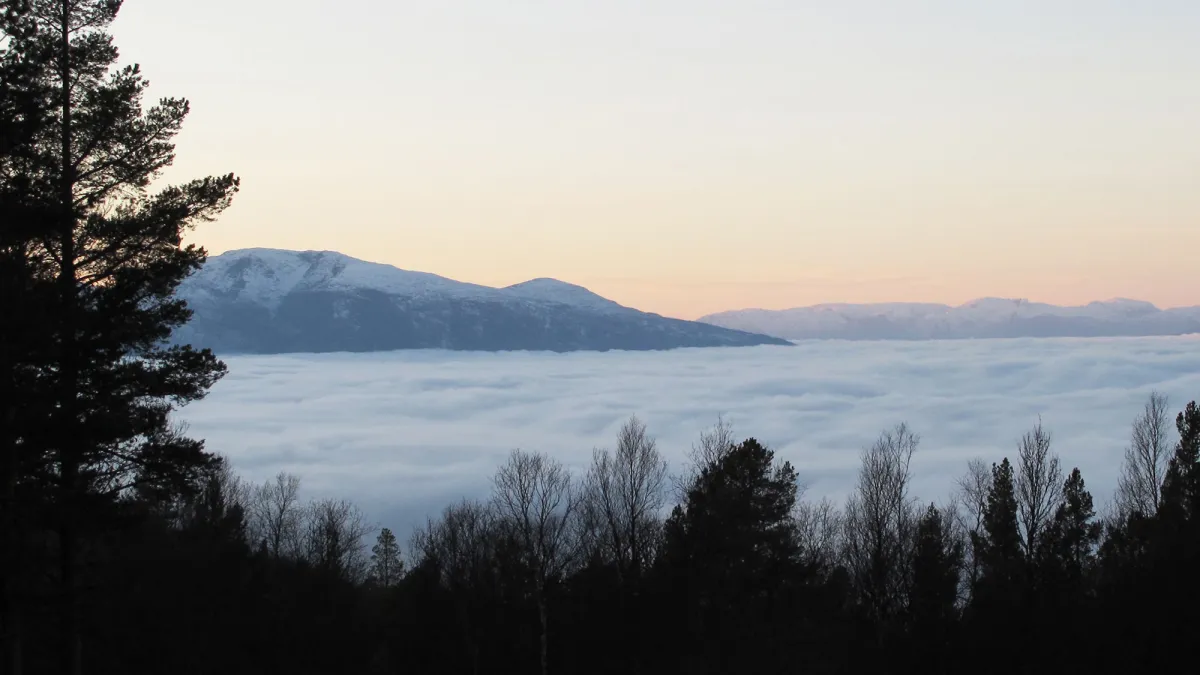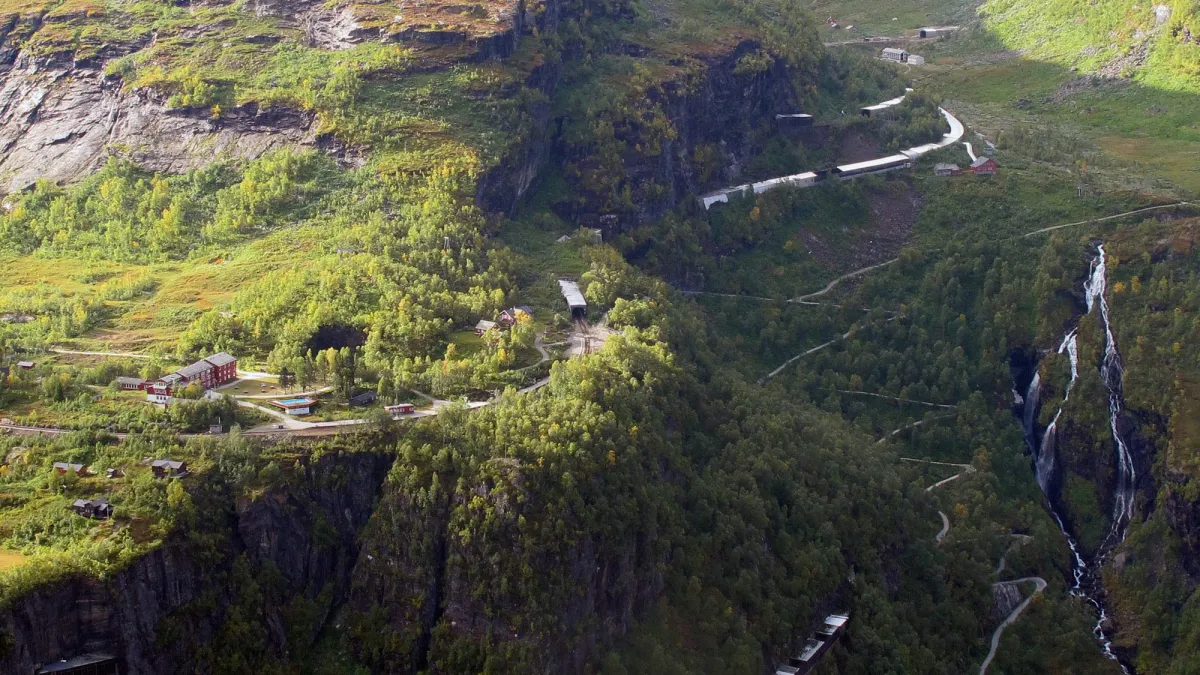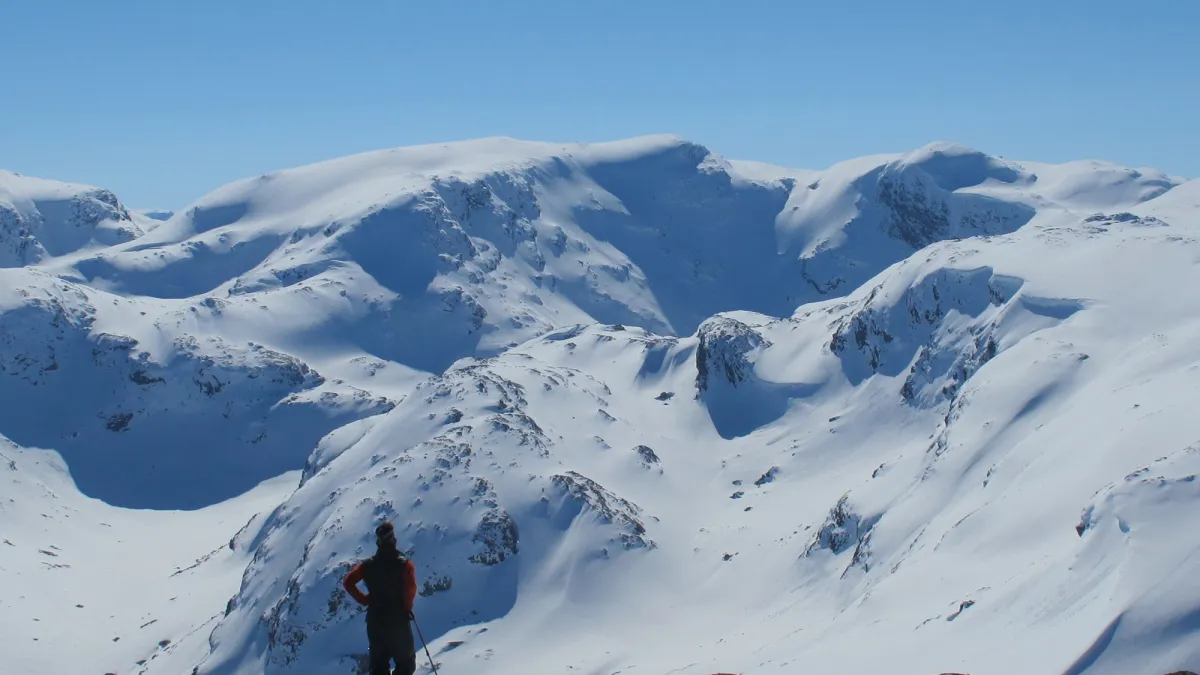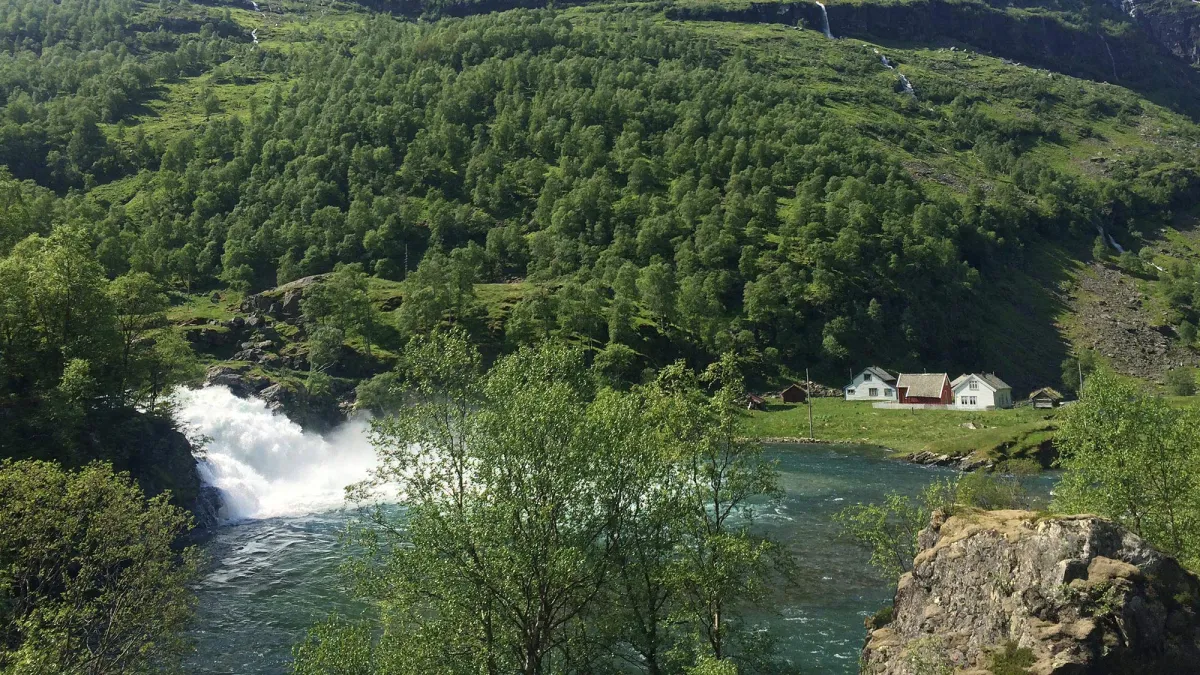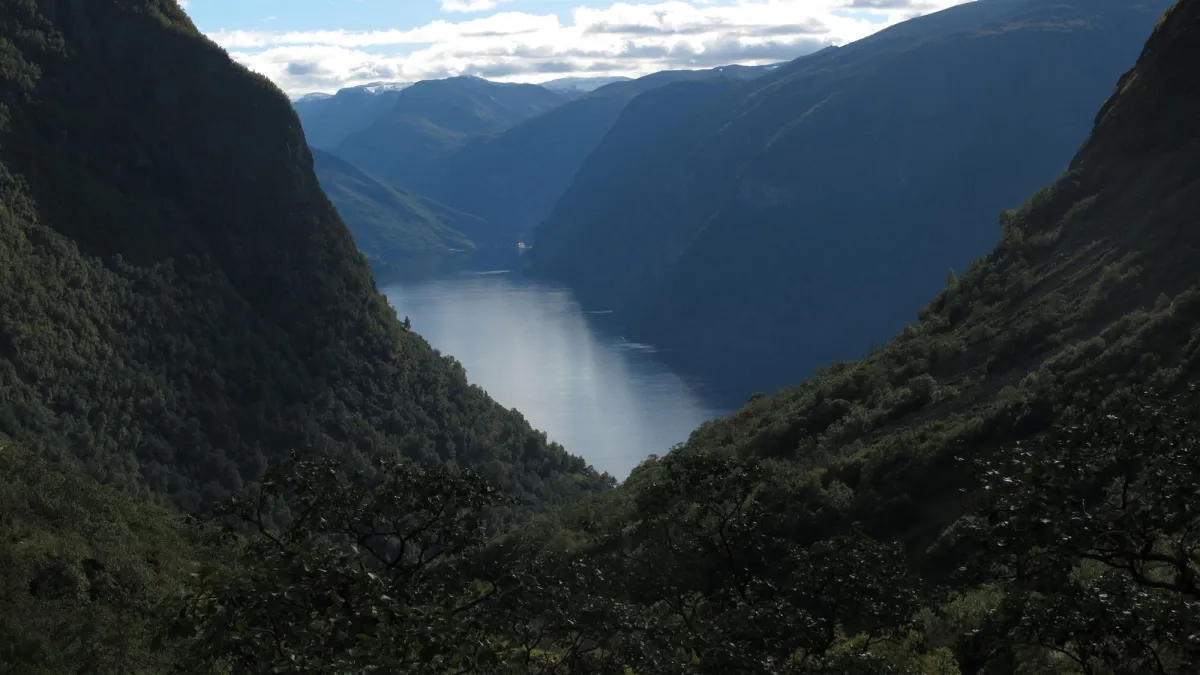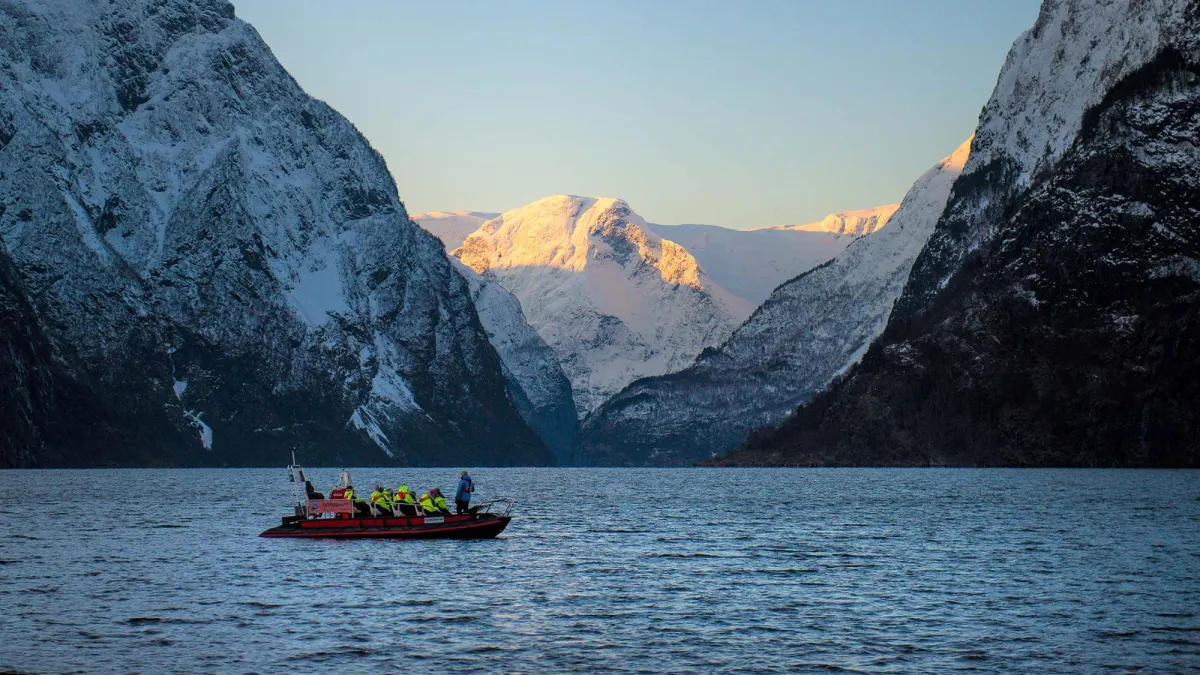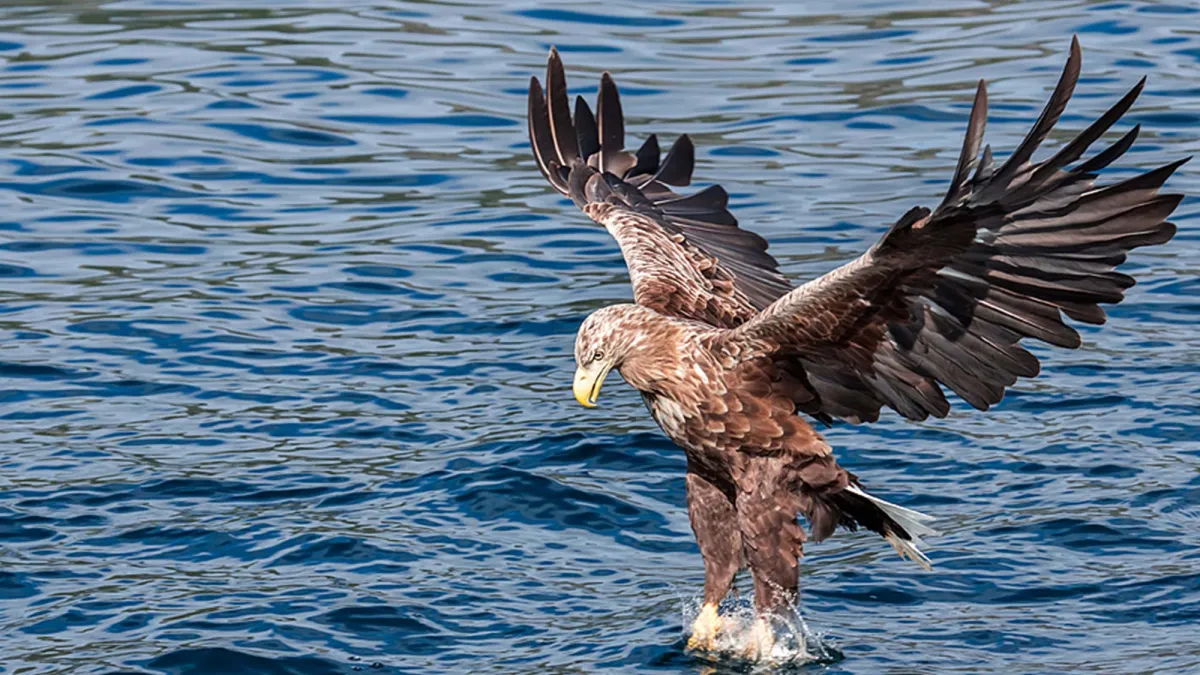INTO NATURE
Between east and west, where Skarvheimen meets the Sognefjord and the Bergen railway meets Flåmsbana, lies Vatnahalsen (820 moh.). Here you are in the midst of the Western Norwegian Fjord Landscape – one of the wildest and most beautiful sceneries in the world.
The location between the fjord and the mountains on top of charming Flåmsdalen makes Vatnahalsen unique. You move through a cultural landscape filled with memories of a bygone era. You move in proximity to the longest and deepest fjord in Scandinavia. You move through one of the wildest and most breathtaking landscapes in Norway with mountains that extend vertically up from the fjord.
The West Norwegian Fjord Landscape received UNESCO World Heritage Status on July 14, 2005 in Durban, South Africa. According to the committee, this is one of the most beautiful fjord landscapes in the world, thanks to the narrow valleys with steep crystalline mountain walls extending from the bottom of the fjord up to 1400 meters above the water level. Along these walls, countless waterfalls pour out to the fjord far down there, while free-flowing rivers run down from mountain lakes and glaciers through forests, farms and picturesque miniature beaches, before they flow into the blue-green fjord.
On your way through this wild nature you can experience a multitude of natural phenomena, both on land and water. Seal, porpoise and submarine moraines are just some of the fjord's species, while golden eagles, kestrels, gyrfalcons, white-tailed sea eagle and goshawk are in the air. At the same time, the remains of abandoned transhumant farms add a cultural dimension that helps create an unparalleled experience.
The Fjord Region was voted the world's most sustainable travel destination by National Geographic, both in 2004 and 2009. The cultural heritage goes deep in this area, and with its unique location, Vatnahalsen is a natural starting point for exploring the area. Our goal is to bring you into the Norwegian heritage and let you experience untouched nature and exotic fjord culture while taking a break from everyday life.


